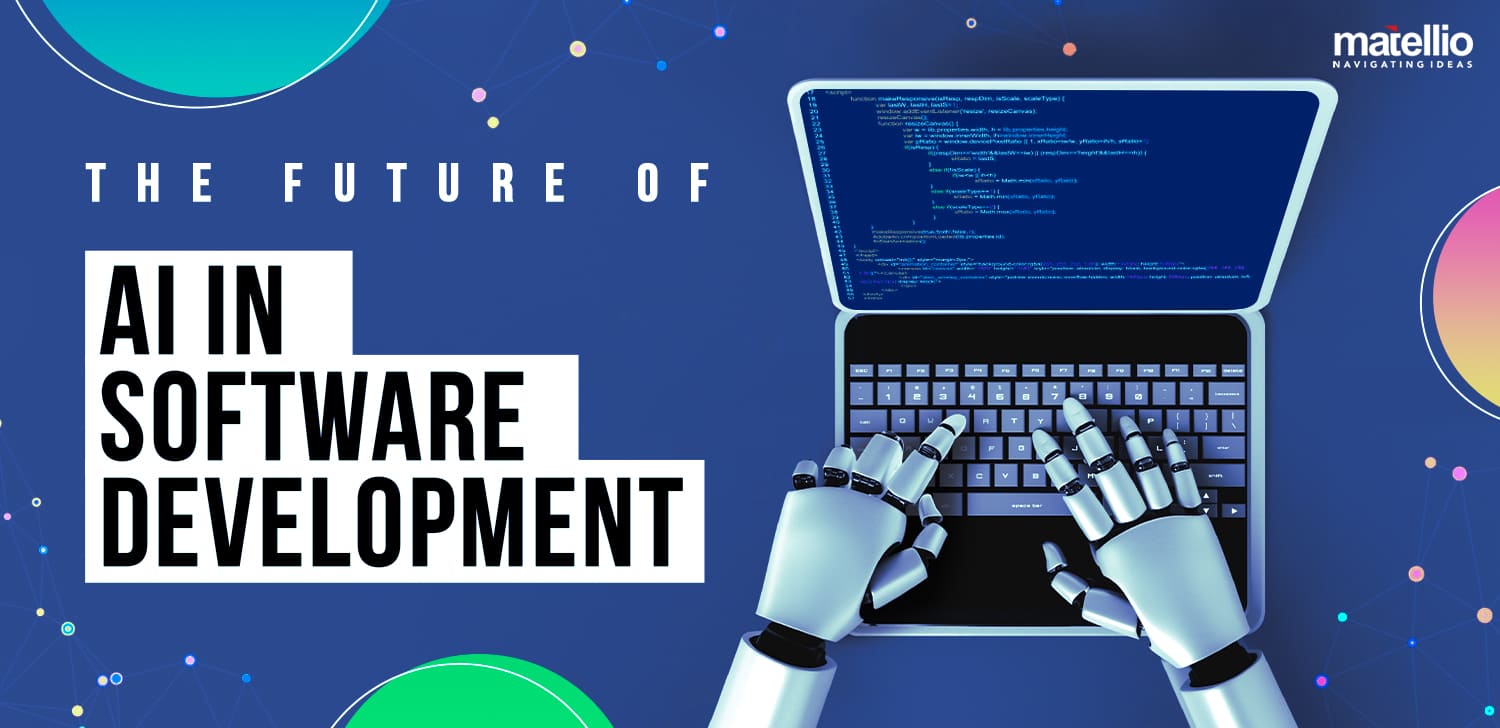Artificial Intelligence is no longer a distant concept for future innovation—it’s actively reshaping how software is built, deployed, and evolved. As AI tools grow increasingly intelligent and adaptive, the development process is undergoing a profound transformation, ushering in an era of heightened productivity, reduced redundancy, and amplified creativity.
From automated coding to predictive debugging, AI is shifting the developer’s role from routine execution to high-level strategic thinking.
Why AI is Revolutionizing Software Development
AI is enabling a new paradigm where developers can focus on solving complex, meaningful problems, while machines handle the repetitive and technical groundwork. According to Grand View Research, the AI industry is projected to grow at an annual rate of 36.6% from 2024 to 2030, underscoring its massive impact on tech ecosystems worldwide.
Rather than replacing developers, AI amplifies their capabilities. It serves as a cognitive partner—accelerating ideation, refining code, and guiding design choices.
Table of Contents
-
Debunking Common Myths About AI in Software
-
What AI Can (and Can’t) Do in Development
-
Why Developers Are Still Irreplaceable
-
Top Applications of AI in Software Engineering
-
Navigating AI Risks with Strategic Practices
1. Debunking Common Myths About AI in Software
Myth 1: “AI will replace developers”
AI doesn’t eliminate jobs—it evolves them. By taking over repetitive tasks like testing, syntax correction, and version tracking, AI allows developers to focus on innovation and architectural design.
Myth 2: “Custom AI models are unaffordable”
Thanks to cloud infrastructure and pre-trained models, building AI into software no longer demands colossal resources. Services like OpenAI, Hugging Face, and AWS offer scalable, ready-to-fine-tune models at a fraction of the traditional cost.
Myth 3: “AI is just another trend”
AI isn’t a hype wave; it’s a technological shift. Its widespread use in sectors like finance, education, and logistics reflects sustainable, scalable value.
Myth 4: “Only data scientists can use AI”
With intuitive APIs and low-code interfaces, developers with minimal machine learning experience can now embed AI capabilities—from chatbots to predictive analytics—directly into applications.
Myth 5: “Low-code AI is only for non-techies”
Even seasoned developers leverage no-code/low-code platforms to prototype quickly, automate tedious tasks, and focus on complex problem-solving, not boilerplate.
2. What Generative AI Can Do in Development
Generative AI tools such as GitHub Copilot, Amazon CodeWhisperer, and ChatGPT are redefining how software is written and optimized.
Key Tasks AI Can Handle:
-
Routine Automation: Linting, formatting, and compiling code.
-
Code Drafting: Generating boilerplate, UI layouts, or API integrations.
-
Code Refinement: Suggesting performance enhancements or error fixes.
-
Development Acceleration: Offering real-time recommendations to boost cycle times and version control.
Generative AI boosts efficiency, but it still relies on developers for context, creativity, and compliance.
3. Why Developers Are Still Indispensable
Even in an AI-driven workflow, human expertise is irreplaceable. Here’s why developers remain at the core:
a. Complex Problem Solving
AI works well within predefined rules but struggles with ambiguous or novel challenges. Developers provide the cognitive flexibility needed to navigate real-world constraints.
b. Contextual Intelligence
Understanding user behavior, ethical implications, security considerations, and business goals is something AI lacks. Developers tailor solutions with domain knowledge and foresight.
c. Strategic Vision
AI is reactive; developers are proactive. They align code with long-term business strategies and ensure scalability, maintainability, and user-centric design.
d. Creative Adaptability
Innovation requires breaking patterns, not repeating them. Developers can dream up unique architectures, user experiences, and unconventional solutions—something AI can’t do alone.
4. Top Applications of AI in Software Engineering
AI is a co-pilot that enhances every stage of the software lifecycle:
1. Generating Code Summaries & Documentation
AI tools streamline onboarding and maintenance by auto-generating documentation, summarizing code logic, and conducting test coverage analysis.
2. Enhancing Coding Efficiency
Real-time code suggestions, syntax error detection, and smart auto-completion reduce mental load and speed up development.
3. Project Planning & Resource Allocation
AI analyzes historical data to suggest timelines, allocate developers effectively, and forecast risks, helping teams adapt dynamically.
4. Bug Detection & Resolution
With predictive analysis and intelligent scanning, AI can detect hidden bugs, reduce regression errors, and suggest optimized fixes.
5. Closing Skill Gaps
AI tools empower non-experts to contribute meaningfully, democratizing development and encouraging collaborative problem-solving.
5. Mitigating AI Risks in Software Development
While the rewards of AI are substantial, so are the risks. A balanced approach ensures long-term viability and trust.
Potential Pitfalls:
-
Dependency: Teams may become overly reliant on AI outputs.
-
Security Gaps: Poorly vetted AI integrations can expose systems to breaches.
-
SEO & Content Quality: AI-generated content may lack authenticity, affecting engagement.
-
Hidden Technical Debt: AI-written code might pass basic tests but fail in edge cases.
Best Practices:
-
Use-case Validation: Don’t use AI for the sake of it. Align with specific goals.
-
Human-in-the-loop: Always have expert oversight, especially in QA, security, and UX.
-
Regular Audits: Periodically assess AI-generated code for maintainability and compliance.
-
Invest in Training: Upskill teams to work in tandem with AI, not around it.
Conclusion: AI + Humans = A New Era of Software Development
AI is not replacing developers; it’s reshaping what development means. It removes barriers, accelerates workflows, and unlocks potential—but it’s the human touch that gives software purpose, personality, and precision.
The future of software isn’t just intelligent—it’s collaborative.

Leave a Reply